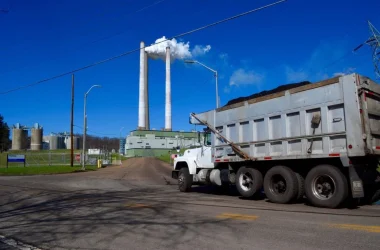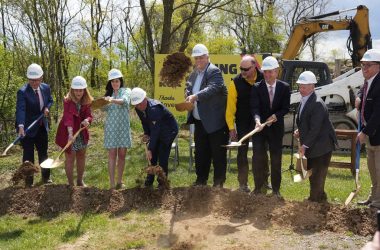By JIM ROSS
The State Journal
CHARLESTON, W.Va. — Natural gas production in West Virginia is not growing as much as it is in Pennsylvania and Ohio. The head of the West Virginia Oil and Natural Gas Association blames it on noncompetitive drilling laws.
Specifically, that means West Virginia lacks laws allowing joint development and co-tenancy.
WVONGA will try again in the next legislative session to secure those two items, said Anne Blankenship, WVONGA executive director.
“Our surrounding states, including Ohio and Pennsylvania, have laws in place to address this issue, and production is increasing at higher rates in those states than in West Virginia. To become competitive with these states, West Virginia must pass similar laws.”
Co-tenancy would allow drilling when 75 percent of owners of a tract agree to allow development of mineral rights, even if the other 25 percent do not approve or cannot be located. Joint development would allow drilling companies to use horizontal drilling to extract natural gas under land using leases that were bought when shallow, vertical wells were the only drilling technology available.
Both practices have been opposed by landowner rights organizations and the West Virginia Farm Bureau.
Senate Bill 576, which addressed joint development and co-tenancy, passed the state Senate this year but died in committee when it moved to the House of Delegates.
EQT is one of the largest drillers and producers of natural gas in West Virginia. In a recent conference call, EQT CEO Steve Schlotterbeck referred to what he called West Virginia’s “antiquated” oil and gas drilling laws and regulations when discussing EQT’s capital expenditure program and how it plans to drill more in Pennsylvania than in West Virginia.
An EQT spokesperson confirmed that Schlotterbeck was referring to the lack of joint development and co-tenancy in West Virginia.
Blankenship’s comments came as WVONGA compared production in West Virginia counties last year. Blankenship said Doddridge County (334,486,963 cubic feet) was by far the largest natural gas producing county in 2016, producing about 334.5 million cubic feet, followed by Wetzel County with 208.7 million.
The next four counties ranked by production were: Marshall, with 143.1 million cubic feet; Ritchie, with 130.8 million; Harrison, with 128.3 million; and Tyler, with 120.9 million.
Statewide, West Virginia wells produced nearly 1.35 billion cubic feet, up about 2.5 percent from 2015, Blankenship said.
According to the U.S. Energy Information Administration, West Virginia’s natural gas production last year increased by about 56.3 million cubic feet, or 4.3 percent. Pennsylvania’s production increased by 450.99 million cubic feet, or 9.37 percent.
Ohio overtook West Virginia in production by producing about 44.5 percent more gas than in 2015, according to the EIA.
See more from The State Journal





